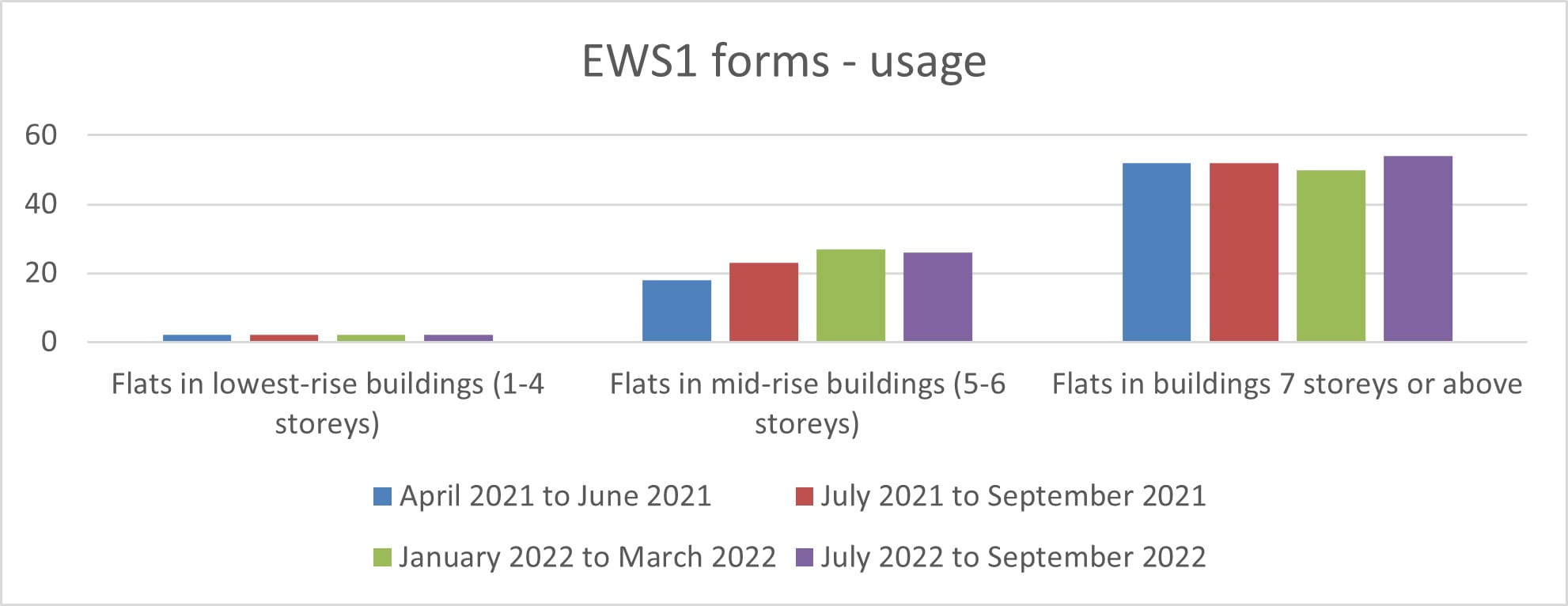External Wall System 1 (EWS1) forms are not a legal requirement, they do not holistically assess a building' fire safety risk, and they have caused potentially avoidable delays to the sale and purchase of properties across the country since their introduction in December 2019.
What do they cover?
EWS1 forms allow building owners to confirm to valuers that an external wall system has been assessed by a suitable expert. They are, in essence, a part of the mortgage valuation process.
An EWS1 signatory (most commonly a qualified fire engineer) investigates the named building's primary external wall materials (typically insulation, filler materials and cladding), installed cavity barriers and external attachments (such as balconies), and confirms which category within two options – 'A' or 'B' – the system falls within.
Option A covers instances in which external wall materials are not thought to support combustion and requires the EWS1 signatory to confirm 'to the best of [its] knowledge':
- Primary materials used meet the applicable criteria of limited combustibility or better;
- Cavity barriers are installed to an appropriate standard in relevant locations; and
- Which one of the following applies:
A1 - there are no attachments whose construction includes significant quantities of combustible materials.
A2 - there is an appropriate risk assessment covering the attachments confirming that no remedial works are required.
A3 - (where neither A1 or A2 applies) there may be potential costs of remedial works to attachments.
Option B captures buildings containing combustible materials within their external wall. If applicable, the EWS1 signatory will confirm that they have used their expected reasonable skill and care to assess the fire risk presented by the external wall construction (and attachments), and confirm that either:
B1 - no remedial works are required as the fire risk is sufficiently low; or
B2 - the fire risk is sufficiently high that remedial works are required. The signatory will identify any required remedial works and interim measures.
What is their intended purpose?
Post-Grenfell, ambiguity surrounding whether the Regulatory Reform Fire Safety Order (FSO) required external walls of multi-occupied residential buildings to form part of the building's fire risk assessment led mortgage lenders to seek assurances regarding their fire resistance as a pre-requisite to lending. Following widespread concern among building owners and difficulties securing lending, the EWS1 form was born.
Ongoing demand
Introduced after the ban on combustible materials within external walls in buildings of 18 metres or more in height; EWS1s were originally only intended to cover this so called 'higher risk' buildings.
Demand for EWS1s extended to lower rise buildings in 2020 following government guidance that 'the need to assess and manage the risk of external fire spread applies to buildings of any height'. That guidance was later withdrawn following publication of a statement by industry leading experts (including Dame Judith Hackitt) in July 2021, which confirmed that there was no need to request EWS1 forms for buildings below 18 metres.
Despite a clear shift in the Government's response, and the enactment of widespread legislative building safety reform since their introduction, the demand for EWS1s from lenders often still makes them a pre-requisite to securing valuations and mortgages. This was emphasised in government-published statistics obtained from seven UK lenders between April 2021 to September 2022 (see below).

What is the future for the EWS1?
The data obtained from UK lenders shows that demand for EWS1s remains. The slight decline in demand since June 2022 may be because pertinent sections of the Fire Safety Act – confirming that the FSO applies to external walls within multi-occupied residential buildings – only came into force in June 2022, alongside numerous sections of the Building Safety Act. The slow pace at which any demand for EWS1s appears to be falling (and, in some cases, not at all) suggests that EWS1s are here to stay – for now at least.
It remains possible that the purpose served by EWS1s will be replaced by the introduction of newer instruments, such as the Publicly Available Specification (PAS) 9980 guidance, which was introduced in January 2022 as a methodology for building professionals undertaking fire risk appraisals of external walls with life critical fire safety risks.
However, given that PAS is designed to assess 'risk to life' as opposed to 'risk to value', it seems more likely that the two will continue to co-exist; with PAS merely providing an additional metric against which the fire safety of a building's external wall construction is to be measured.
